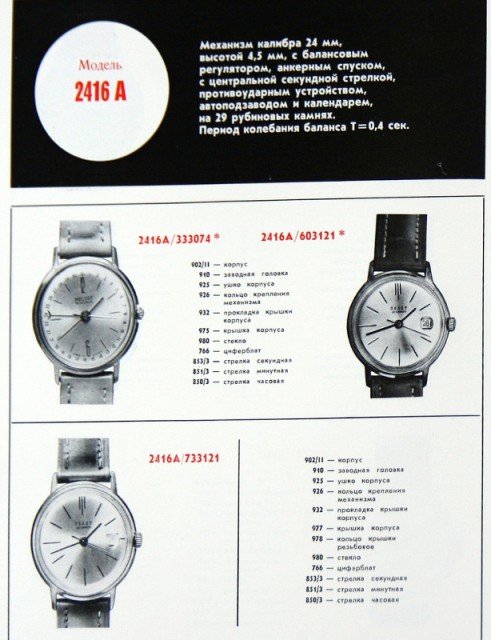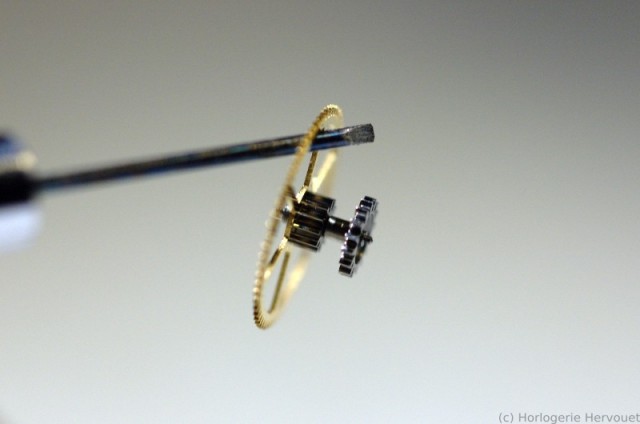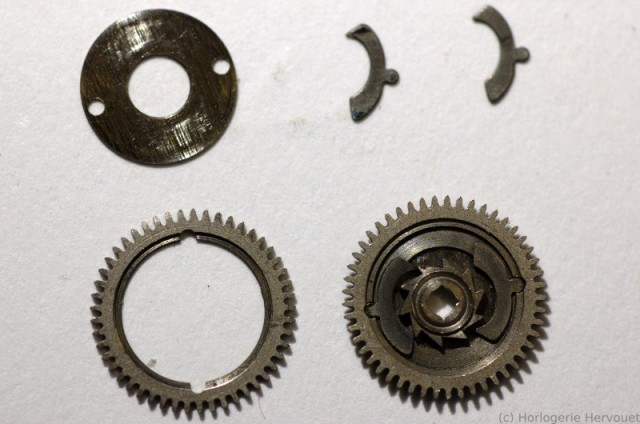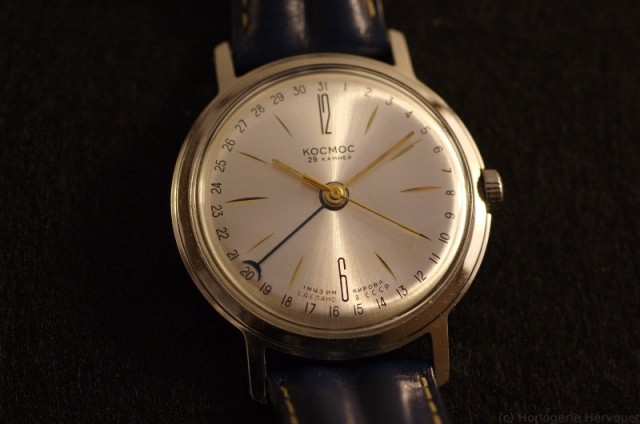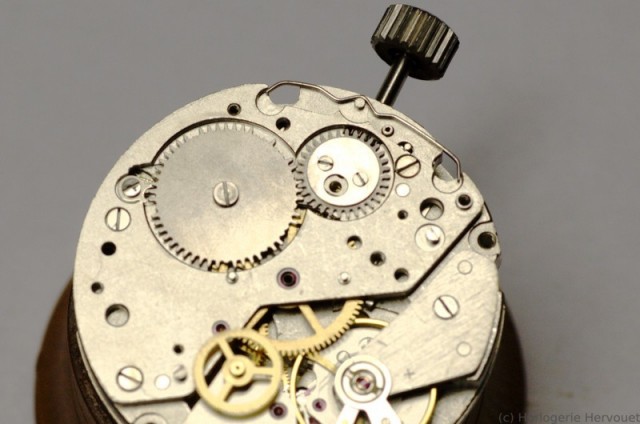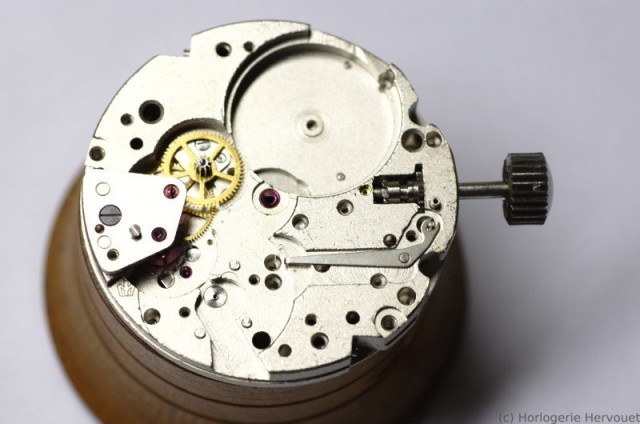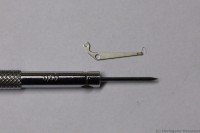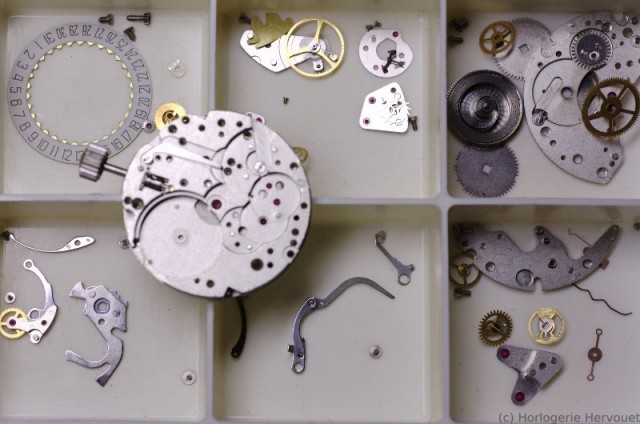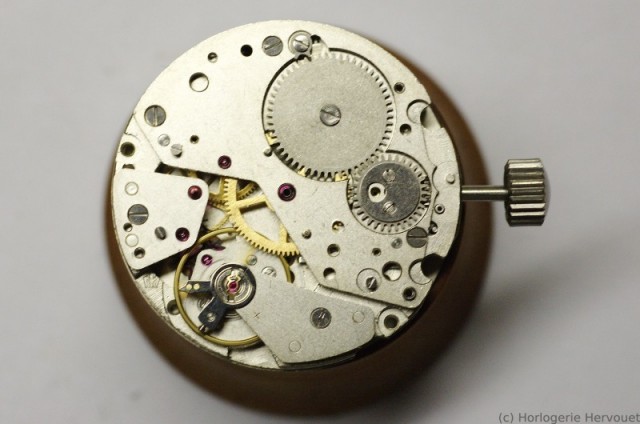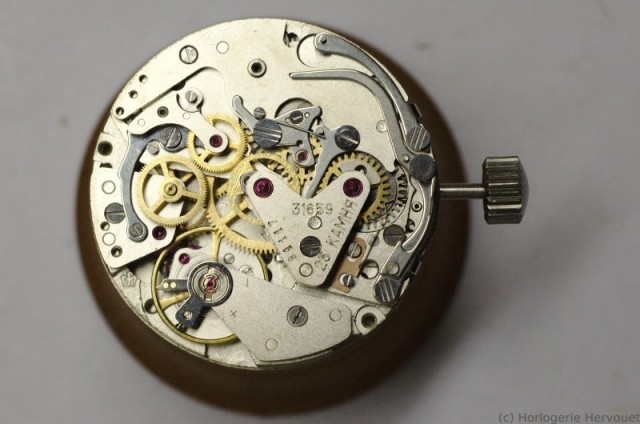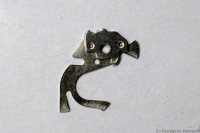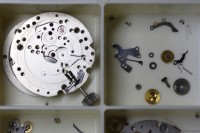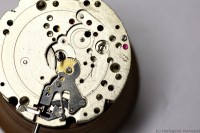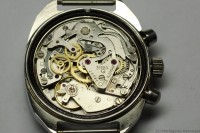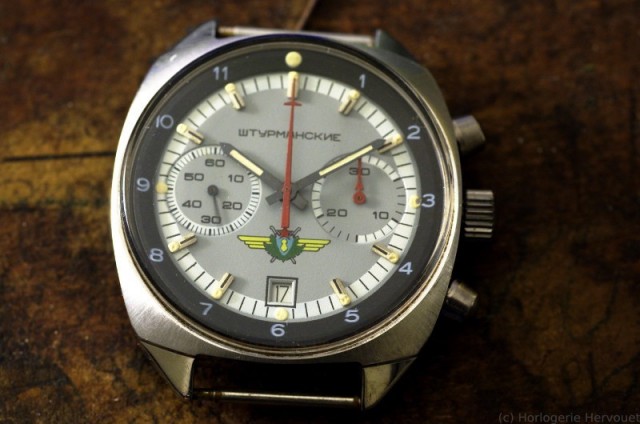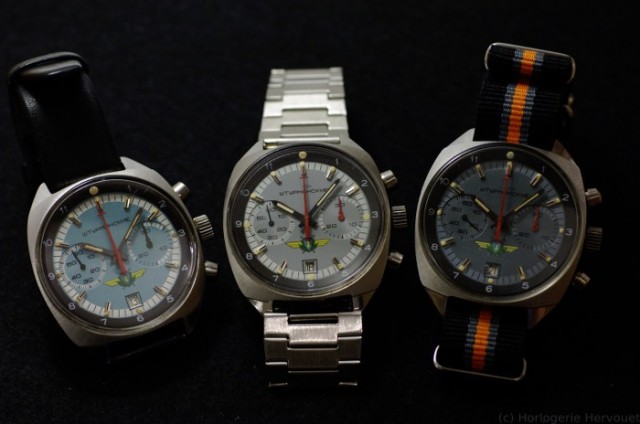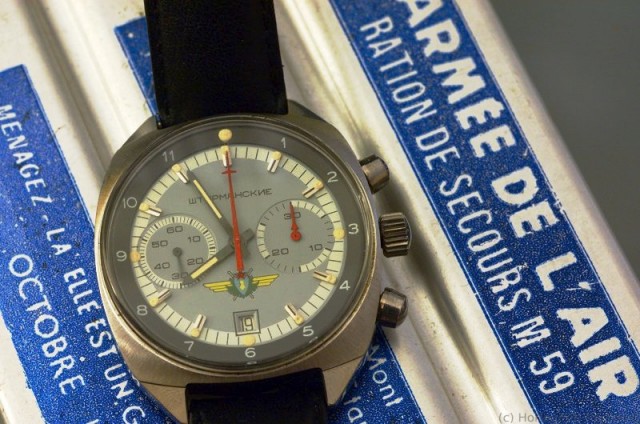In Soviet Russia a wide range of movements were produced over the years. The first soviet attempts were based on existing designs, bought and locally produced. But contrary to a popular belief, they did not only copy western technology or produce only low-grade movements, they also developed original designs.
The 1MChZ (the 1st Moscow Watch Factory, later named Poljot) 2416, a slim (3,9mm) automatic with pointer date and central second appeared in 1963, one year after the much more common variant with a conventional date window. To build such a thin movement while keeping a traditional rotor the designers found some unusual solutions:
The coupling between mainspring, autowind gears and handwind gears is also nicely done, allowing the watch to be winded by hand: a two-stage ratchet wheel is mounted atop the mainspring barrel.
The thinness of the movement allowed it to be found in the slim dresswatches of the era, mostly in the Poljot “De Luxe”. The “Kocmoc” (cosmos) model is probably the only pointer date watch of the Soviet production. It is often found in gold plated cases but this one is made from stainless steel (probably a case replacement). Such cases were mostly made for the export market, however the case back bears a cyrillic dedication from 1972.
The production of the 2416 family ended in the beginning of the 1970s, after only one decade.

